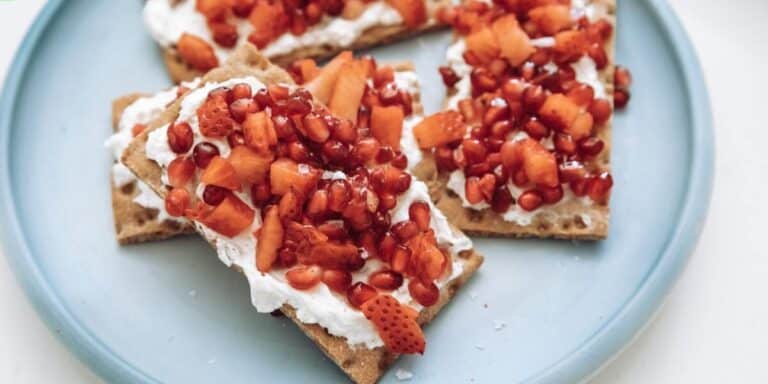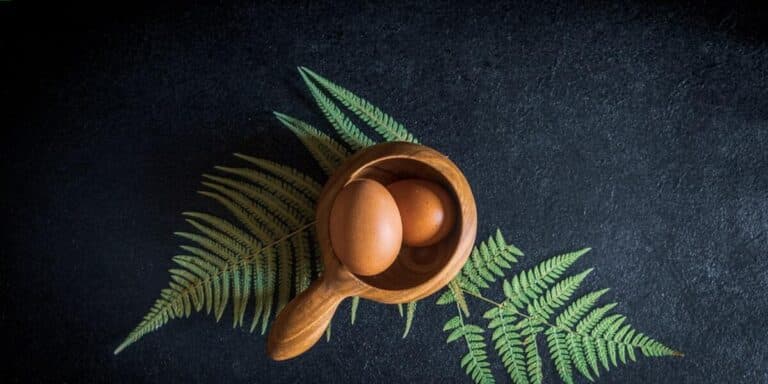Uses of Garlic Powder in Cooking
You’re probably familiar with garlic powder as a convenient alternative to fresh garlic, but you may not be aware of its full potential in the kitchen. You can use it to add depth and savory umami notes to a wide range of dishes, from soups and stews to meat rubs and salad dressings. As you explore the uses of garlic powder, you’ll discover that it’s more than just a substitute for fresh garlic – it’s a versatile ingredient that can enhance both sweet and savory elements. But where do you start, and what are the best ways to use it?
Key Takeaways
• Garlic powder enhances flavors in soups, stews, and sauces, adding a rich, savory depth to various dishes.
• It pairs well with meats like beef, chicken, and pork, and can be used in homemade rubs and marinades.
• Garlic powder can be used to create flavorful salad dressings, adding depth and a savory taste to vinaigrettes and creamy dressings.
• It can also elevate the flavor of roasted vegetables, grains, and legumes, and can be used to make aromatic dipping sauces.
• Additionally, garlic powder can be used to add flavor to snacks like popcorn, pretzels, and trail mix, complementing their natural sweetness.
Enhancing Soups and Stews
When you’re looking to add depth and richness to your soups and stews, garlic powder can be a convenient and effective alternative to fresh garlic. You don’t have to worry about mincing or crushing cloves, which can be a real time-saver when you’re in a hurry. Plus, garlic powder is easier to mix into your dish, ensuring an even distribution of flavor.
You can use garlic powder to enhance the flavor of soups like minestrone, creamy broths, or clear soups. It pairs well with vegetables, beans, and grains, making it a great addition to soups like lentil soup or chicken noodle soup. When you’re making stews, garlic powder can add a savory flavor that complements the richness of the meat and vegetables.
Just be aware that garlic powder is more concentrated than fresh garlic, so you’ll want to use less of it to avoid overpowering the dish. Start with a small amount and adjust to taste. You can always add more, but it’s harder to remove excess garlic powder from the dish. By using garlic powder in your soups and stews, you can add a depth of flavor that will make your meals more satisfying and delicious. With its convenience and ease of use, garlic powder is a great addition to your spice rack.
Making Savory Meat Rubs
You can give your meat dishes a boost by incorporating garlic powder into savory rubs. When making your own rubs, you’ll find that garlic powder pairs particularly well with beef, enhancing its rich flavor. By experimenting with homemade rub recipes, you’ll be able to balance and blend flavors to suit your taste preferences.
Enhancing Beef Flavor
Garlic powder is often a key ingredient in homemade savory meat rubs, adding a depth of flavor that complements the richness of beef. When you’re looking to enhance the flavor of your beef dishes, you can’t go wrong with garlic powder. It pairs perfectly with the bold, meaty flavor of beef, and it’s incredibly versatile. Whether you’re making a rub for a slow-cooked roast or a marinade for grilled steak, garlic powder is a great addition.
Here are some ways you can use garlic powder to enhance the flavor of your beef dishes:
- Add depth to your beef burgers: Mix a little garlic powder into your burger meat for a flavor boost.
- Elevate your steak game: Rub garlic powder onto your steak before grilling for a savory, aromatic flavor.
- Enhance your beef stew: Add a sprinkle of garlic powder to your stew for a rich, comforting flavor.
- Make a savory beef seasoning: Mix garlic powder with other spices to create a seasoning blend that’s perfect for beef dishes.
Homemade Rub Recipes
Building on the idea of using garlic powder to enhance beef flavor, creating your own homemade rub recipes can take your savory meat dishes to the next level. You’ll be able to customize the flavors to your liking and avoid any preservatives or additives found in store-bought rubs. To start, you’ll need a base of spices, such as paprika, brown sugar, and chili powder. Then, you can add garlic powder to give it a rich, savory flavor.
You can also experiment with different ratios of spices to create unique flavor profiles. For example, if you’re making a rub for chicken, you may want to add more paprika and less chili powder. If you’re making a rub for beef, you can add more garlic powder and brown sugar. The key is to taste as you go and adjust the seasoning to your liking. Once you’ve settled on a recipe, simply mix the spices together and store them in an airtight container. This way, you can easily sprinkle the rub on your meat before cooking for added flavor.
Adding Depth to Sauces
A small amount of garlic powder can make a significant difference in the flavor of sauces, adding a rich, savory depth that enhances the overall taste. When you’re cooking up a sauce, you want it to be full of flavor, and garlic powder can help you achieve that. Whether you’re making a simple pasta sauce or a complex curry, a sprinkle of garlic powder can add a depth of flavor that’s hard to replicate with fresh garlic.
You can add garlic powder to your sauces at any stage of cooking, but it’s especially effective when added towards the end of the cooking time. This way, the flavors have a chance to meld together, and the garlic powder doesn’t get lost in the sauce. Here are four ways to use garlic powder to add depth to your sauces:
- Enhance tomato sauce: Add a pinch of garlic powder to your homemade tomato sauce for an instant boost of flavor.
- Elevate creamy sauces: Mix garlic powder into your creamy sauces, like Alfredo or mac ‘n cheese, for a rich, savory flavor.
- Deepen BBQ sauce: Add a sprinkle of garlic powder to your BBQ sauce for a depth of flavor that complements the sweetness of the sauce.
- Add warmth to curries: Mix garlic powder into your curry sauces for a warm, aromatic flavor that complements the spices.
Mixing Into Marinades
When you’re looking to add flavor to your dishes from the ground up, mixing garlic powder into your marinades can make a huge difference in the final result. You’ll find that it’s especially effective when working with meats like chicken, beef, or pork. Simply combine the garlic powder with your choice of oil, acid (such as vinegar or lemon juice), and any other desired herbs or spices to create a marinade that will elevate your dishes.
As you mix the garlic powder into your marinade, you’ll want to ponder the type of dish you’re making and the strength of flavor you’re aiming for. A general rule of thumb is to start with a small amount (about 1/4 teaspoon per pound of meat) and adjust to taste. This will allow you to add depth without overpowering the other flavors in your dish. You can also mix garlic powder with other seasonings, like dried oregano, thyme, or paprika, to create a blend that complements your meat of choice.
When you’re working with delicate fish or vegetables, you may want to reduce the amount of garlic powder even further, as these ingredients can quickly become overwhelmed by strong flavors. However, with heartier meats like lamb or venison, you can often get away with a bit more garlic powder. Experimenting with different proportions and combinations will help you develop a sense of how to balance the flavors in your marinades and achieve the desired outcome.
Creating Flavorful Salad Dressings
You can also add garlic powder to homemade salad dressings for an instant flavor boost that complements a wide range of greens and vegetables. It’s a simple way to add depth and a savory taste without overpowering the other ingredients. Whether you’re making a vinaigrette or a creamy dressing, garlic powder blends in easily and enhances the overall flavor profile.
When using garlic powder in salad dressings, start with a small amount – about 1/4 teaspoon per 2 tablespoons of dressing – and adjust to taste. You can always add more, but it’s harder to remove excess garlic powder. Here are some ideas for incorporating garlic powder into your salad dressings:
- Classic Vinaigrette: Mix garlic powder with red wine vinegar, olive oil, Dijon mustard, salt, and pepper for a simple yet flavorful dressing.
- Ranch-Style Dressing: Combine garlic powder with buttermilk, mayonnaise, chopped fresh herbs (like parsley or dill), salt, and pepper for a creamy and zesty dressing.
- Greek-Inspired Dressing: Blend garlic powder with lemon juice, olive oil, crumbled feta cheese, salt, and pepper for a vibrant and savory dressing.
- Spicy Caesar Dressing: Mix garlic powder with lemon juice, olive oil, minced jalapeño peppers, Worcestershire sauce, salt, and pepper for a bold and piquant dressing.
Seasoning Roasted Vegetables
When you’re roasting vegetables, you want to bring out their natural flavors, and garlic powder can help you do just that. By sprinkling a pinch of garlic powder over your roasted vegetables, you’ll enhance their flavor profiles and add a depth of taste that’s hard to resist. You’ll find that garlic powder pairs particularly well with certain vegetables, such as Brussels sprouts, broccoli, and carrots, to create a deliciously savory dish.
Enhancing Flavor Profiles
Sprinkling garlic powder over roasted vegetables adds a rich, savory flavor that enhances their natural taste without overpowering it. You’ll love how easily it elevates the flavors of your favorite vegetables. When you’re roasting vegetables, you want to bring out their natural sweetness, and garlic powder does just that. It’s especially effective when combined with other herbs and spices.
- Balances sweetness: Garlic powder counters the natural sweetness of roasted vegetables, creating a balanced flavor.
- Adds depth: The savory flavor of garlic powder adds depth to roasted vegetables, making them more interesting.
- Complements earthy flavors: Garlic powder pairs well with earthy flavors found in vegetables like beets and carrots.
- Enhances umami flavor: Garlic powder amplifies the umami flavor in vegetables, making them more satisfying to eat.
When using garlic powder, remember that a little goes a long way. Start with a light sprinkle and adjust to taste. This will guarantee that your roasted vegetables are flavorful but not overpowering.
Ideal Vegetable Pairings
Among the many vegetables that pair well with garlic powder, some stand out for their ability to absorb and complement its rich, savory flavor. You can’t go wrong with carrots, for instance. The sweetness of the carrots complements the pungency of the garlic powder beautifully. Simply toss sliced carrots with olive oil, salt, pepper, and garlic powder, and roast until tender and caramelized. Brussels sprouts are another excellent choice. Cut them in half, toss with olive oil, garlic powder, and salt, and roast until crispy. Cauliflower also loves garlic powder – try tossing it with olive oil, garlic powder, and lemon juice, then roasting until golden and tender. These roasted vegetables make a fantastic side dish or add a healthy boost to salads and sandwiches. You can experiment with different vegetables and proportions, but these pairings showcase garlic powder’s magic at its best. It will quickly become your go-to seasoning for roasted veggies, trust us!
Elevating Grains and Legumes
You can instantly boost the flavor of grains and legumes by incorporating garlic powder into your recipes, whether it’s a hearty lentil soup or a simple quinoa salad. When you add garlic powder to your grains and legumes, you’ll be amazed at how it enhances their natural flavors. The slightly sweet and nutty flavor of garlic powder complements the earthy taste of lentils, chickpeas, and quinoa, creating a delicious and aromatic experience.
To elevate your grains and legumes, try adding garlic powder to your recipes in different ways. Here are some ideas to get you started:
- Garlic Quinoa: Mix garlic powder with quinoa, diced veggies, and a squeeze of lemon juice for a quick and easy side dish.
- Roasted Chickpeas: Sprinkle garlic powder over chickpeas, toss with olive oil, and roast until crispy for a crunchy snack.
- Lentil Soup: Add garlic powder to your lentil soup for an extra depth of flavor and a comforting meal.
- Garlic Brown Rice: Mix garlic powder with cooked brown rice, chopped scallions, and a drizzle of soy sauce for a flavorful and savory side dish.
Making Aromatic Dipping Sauces
Adding garlic powder to your dipping sauces is a simple way to create aromatic and savory condiments that’ll elevate your snacks and meals. You can start by making a classic garlic aioli. Mix garlic powder with mayonnaise, lemon juice, and a pinch of salt. Taste and adjust the seasoning as needed. This creamy sauce is perfect for dipping fried foods, vegetables, or crackers.
You can also make a garlic ranch dip by blending garlic powder with sour cream, dried herbs, and a pinch of paprika. This tangy and savory sauce is great for dipping chicken wings, pizza, or carrot sticks. For a lighter option, mix garlic powder with Greek yogurt, lemon juice, and chopped fresh herbs like parsley or dill. This invigorating sauce is perfect for grilled meats, vegetables, or pita chips.
When making dipping sauces, remember that a little garlic powder goes a long way. Start with a small amount and adjust to taste. You can also roast garlic powder in the oven for a deeper flavor before adding it to your sauces. Experiment with different combinations of garlic powder, herbs, and spices to create unique flavors. With garlic powder, the possibilities are endless, and you can easily create a variety of aromatic dipping sauces to complement your favorite snacks and meals.
Enhancing Popcorn and Snacks
Sprinkling garlic powder over freshly popped popcorn or homemade snack mixes creates a flavor boost that’ll leave you craving more. You can take your snack game to the next level by incorporating garlic powder into your favorite recipes. The savory flavor of garlic complements the natural sweetness of popcorn and other snack ingredients, creating an irresistible combination.
When it comes to using garlic powder in your snack recipes, the possibilities are endless. Here are a few ideas to get you started:
- Garlic Parmesan Popcorn: Sprinkle garlic powder and grated Parmesan cheese over freshly popped popcorn for a savory and addictive snack.
- Spicy Roasted Chickpeas: Mix garlic powder with chili powder and lemon zest for a flavorful seasoning blend to sprinkle over roasted chickpeas.
- Homemade Trail Mix: Add garlic powder to your favorite trail mix recipe for an unexpected flavor boost.
- Cheesy Garlic Pretzels: Sprinkle garlic powder over pretzels before baking, then top with melted cheese and chopped herbs for a decadent snack.
Frequently Asked Questions
How Do I Convert Garlic Powder to Fresh Garlic in a Recipe?
You’re wondering how to convert garlic powder to fresh garlic in a recipe. Well, it’s quite simple: since garlic powder is three times more concentrated, you’ll need to use about three times more fresh garlic to achieve the same flavor.
What Is the Shelf Life of Garlic Powder Stored at Home?
You’re wondering how long your garlic powder will last at home? Generally, if you store it in an airtight container in a cool, dry place, it’ll keep for 1-3 years; but check the label for specific storage guidance.
Can Garlic Powder Be Substituted With Onion Powder in a Recipe?
You’re in a bit of a flavor pickle, aren’t you? Substituting garlic powder with onion powder might not be the best idea, as they have distinct flavor profiles – garlic’s pungency can’t be replicated by onion’s sweetness.
How Much Garlic Powder Is Equal to One Clove of Garlic?
You’re wondering how much garlic powder equals one clove of garlic? Generally, it’s about 1/4 to 1/2 teaspoon of garlic powder. However, this can vary depending on individual taste and the recipe you’re using.
Can I Make Garlic Powder From Fresh Garlic at Home?
You can make garlic powder from fresh garlic at home, it’s easy! Simply slice the garlic thinly, dry it in a low oven or dehydrator, then blend the dried garlic into a powder using a spice grinder or blender.





